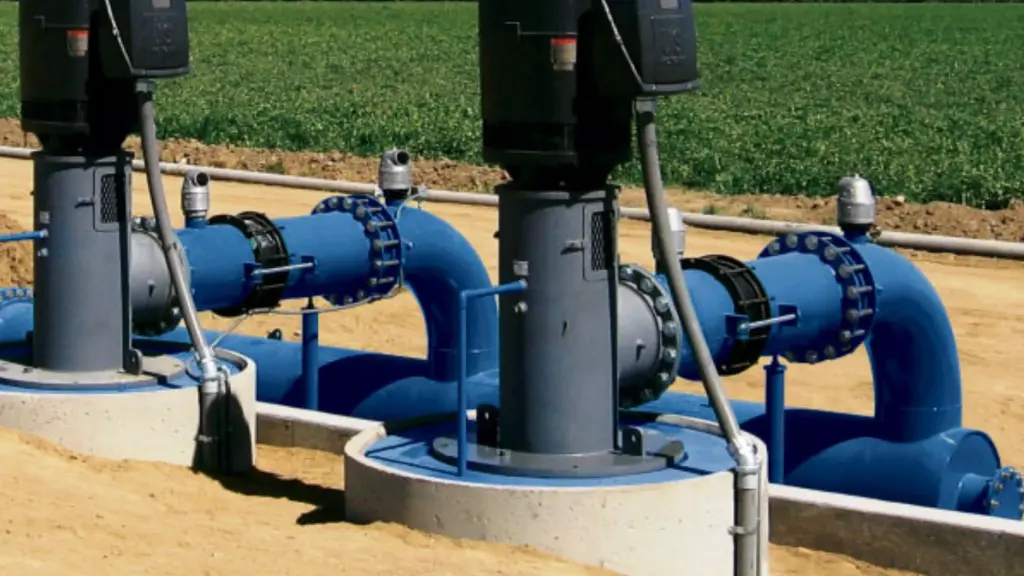Why Your Water Pressure Drops After Spring Rain Might Point to a Deeper Well Issue

Have you noticed your water pressure dropping after a spring rain? It might seem like a small inconvenience, but it could be a sign of something bigger. While we usually think of weather as just affecting our lawns or gardens, rainwater can actually have an impact on your well system, too.
After a heavy rainfall, the pressure drop could point to a deeper issue—one that could affect your well’s ability to provide consistent water flow. Whether it’s related to your pump, pressure tank, or a change in groundwater levels, understanding the connection between rainfall and water pressure is key to preventing bigger problems down the road.
How does heavy spring rain affect private well systems?
Heavy spring rain can significantly impact private well systems, leading to immediate and long-term issues. Here’s how:
- Fluctuations in Water Level: Heavy rainfall can cause the groundwater level to rise or fluctuate, affecting the water available in the well. In shallow wells, the water level may drop below the pump intake, leading to reduced water pressure or complete loss of water supply.
- Contaminant Infiltration: Surface water from heavy rain can infiltrate the well, bringing pollutants such as pesticides, fertilizers, and bacteria. This can compromise water quality, making it unsafe for consumption or use.
- Sediment and Debris: Rainwater can stir up sediment or debris in the well, clogging the pump and filtration systems. This buildup can reduce water flow and pressure and, in severe cases, damage the well components.
- Increased Risk of Contamination: Rainwater can wash contaminants from the surface into the well, especially if the well cap or cover is damaged or improperly sealed. This increases the risk of bacterial contamination, posing a health hazard to those relying on the well.
- Pump and Pressure System Strain: When water levels fluctuate, or sediment accumulates, the pump and pressure system can be overworked, leading to mechanical failure or reduced performance.
Heavy spring rain can affect private well systems by changing water levels, contaminating wells, causing sediment buildup, and potentially damaging well components. Proper maintenance and monitoring are crucial during rainy periods.
Can water pressure changes signal a problem with the well casing?
Yes, changes in water pressure can signal a problem with the well casing, which plays a vital role in maintaining the integrity of your well system. Here’s how issues with the well casing can affect water pressure:
- Casing Cracks or Leaks: A compromised well casing, such as cracks or leaks, allows water from outside the well to enter the system. This can cause fluctuations in water pressure, as the well is no longer sealed properly. It may also lead to contamination from surface water or groundwater entering the well, affecting water quality and pressure.
- Clogging or Sediment Buildup: Over time, if the well casing becomes corroded or clogged with sediment, it can restrict the flow of water into the well. This can cause a drop in water pressure as the pump struggles to pull water through the compromised casing.
- Infiltration of Contaminants: A damaged casing may allow pollutants like bacteria, chemicals, or debris to enter the well. This affects water quality and can cause the well to work harder, reducing the pump’s efficiency and resulting in pressure issues.
- Decreased Efficiency of Pump: If the casing is damaged, insufficient water can be drawn into the pump, forcing it to work harder to maintain water flow. This can result in water pressure dropping or fluctuating.
Changes in water pressure can be a warning sign of problems with the well casing, which requires prompt inspection and repair to ensure proper well function.
What role does groundwater saturation play in fluctuating water pressure?
Groundwater saturation plays a crucial role in fluctuating water pressure in private well systems, as it directly affects water availability and the pump’s functionality. Here’s how groundwater saturation impacts water pressure:
- Water Table Fluctuations: Groundwater saturation refers to the level at which the ground becomes fully saturated with water, influencing the water table. When the groundwater saturation is high, such as after heavy rainfall or during wet seasons, the water table rises, and the well may experience an increase in water flow. However, when the saturation is low, like during droughts or dry spells, the water table drops, leading to a decrease in available water, causing a drop in water pressure.
- Increased Pump Strain: When the groundwater saturation is low, the well pump has to work harder to extract water from deeper levels, potentially causing fluctuations in water pressure. The pump may run dry if the water level falls below the pump’s intake, leading to a complete loss of pressure or system failure.
- Infiltration of Surface Water: High groundwater saturation can also lead to the infiltration of surface water, which might bring contaminants into the well. This can cause water quality issues and affect pressure, as the pump may struggle to maintain flow due to debris or clogging.
Groundwater saturation directly affects water flow into the well and can cause fluctuations in water pressure, requiring careful monitoring and maintenance to ensure consistent water supply and pressure.
Is low water pressure after rainfall linked to well pump issues?
Low water pressure after rainfall can be linked to well pump issues. Rainfall impacts groundwater levels and can directly influence the performance of the well pump. Here’s how this happens:
- Fluctuations in Water Table: The water table may rise after heavy rainfall, and the well casing could become submerged. While this increases water availability, it can also lead to issues if the pump cannot adjust to the changing water levels. If the pump is not designed to handle fluctuating water levels, it might struggle to pull water efficiently, causing drops in water pressure.
- Pump Strain: If the rainfall increases the water level in the well, it can cause the pump to work harder to maintain pressure. On the other hand, if the water level rises too high or floods the pump, it may cause the system to become overloaded or malfunction, leading to inconsistent water pressure.
- Sediment and Debris Infiltration: Rainwater can stir up sediment or debris in the well, especially if the well casing is compromised. This can clog the pump or filter, making it harder for the system to deliver water at the proper pressure.
- Damaged Pump Components: In some cases, excess water or debris from the rain can cause damage to pump components, such as the pressure switch, impeller, or motor. This can lead to decreased water pressure or complete failure.
Low water pressure after rainfall can be linked to well pump issues, including pump strain, sediment infiltration, and mechanical failure, requiring inspection and maintenance to restore normal pressure.
Is Your Well System Ready for Spring?
If your water pressure drops after a spring rain, it’s more than just a passing inconvenience—it’s a signal that something might be going wrong with your well system. Understanding the cause of this drop can help prevent bigger issues down the road. Whether it’s a problem with your well pump, pressure tank, or shifting groundwater, catching these signs early is key to maintaining consistent water pressure year-round. So, don’t ignore the clues; they might just save you from a more costly repair later.
At Well Doctor LLC, we specialize in diagnosing and fixing well issues, including those pesky water pressure drops. If you’re noticing changes in your water flow, we’re here to help. Let us inspect your system, so you can enjoy reliable water pressure no matter the season. Reach out to us today for a professional evaluation!



